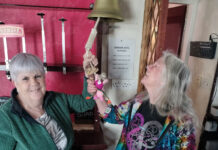Each style of beer has its fans, and they all act differently

UNDERSTANDING your customers and stocking premium as well as low and no-alcohol options are essential considerations for licensees to bear in mind when it comes to driving beer sales, according to Marston’s.
The brewer and pub company’s most recent On Trade Beer Report, an annual report which provides insight into industry trends and the category’s performance in pubs and bars, included a number of tips to help operators increase footfall and spend per head.
The report’s chief finding focused on the importance of getting to know an outlet’s clientele in order to sell more beer. Drinkers of different types of beer were said to have different buying habits.
Lager drinkers, for example, were said to remain loyal to certain brands, with 41% sticking to their favourites and 48% highly influenced by their availability within a bar.
In contrast, ale drinkers were said to be by far the most experimental customers and more likely to buy across multiple sub-categories based on occasion and seasonality.
The trend towards premiumisation was found to still be “dramatically impacting” the category. Almost three quarters (72%) of new lagers are now classed as premium, while craft ale is now more valuable to the on-trade than stout.
This year, customers in the UK on-trade were said to have consumed 66.5 million fewer pints of beer but have spent £177.8 million.
To capitalise on this trend, the report advised operators to offer a wider beer range and identified the opportunity for a “pricing ladder”, which would allow operators to deliver fair prices while enabling consumers to decide when and how far they would like to premiumise their beer choice.
And as the public becomes increasingly health aware, the significance of stocking low and no-alcohol beers has increased too – with the sub-category having grown by 30% since 2016.
While the trend is more prevalent amongst 18 to 24 year old drinkers, it is said to be growing amongst consumers generally as well as among more affluent customers.
Louise Fleming, head of consumer marketing at Marston’s, said: “Understanding the drinker will help pubs to sell more beer by ensuring the right brands are in the right outlets.”



















